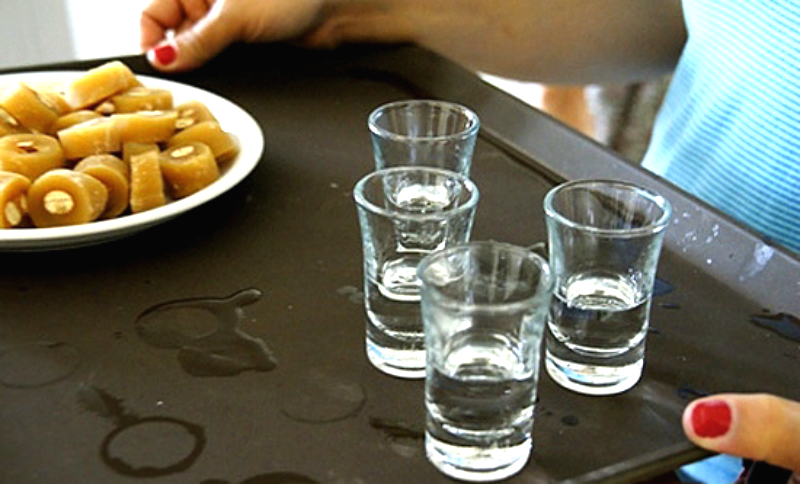Distillation is based on the separation from an alcoholic drink (solution), in our case wine, of Ethyl Alcohol or Ethanol through boiling. Both the water containing the wine and the alcohols have different boiling points. Ethanol has a boiling point of 78.2ᴼC. Some other alcohols have a boiling point slightly higher or even lower than that of Ethanol. As we know, water boils at 100ᴼC.
During the distillation process, initially, the most volatile alcohols, i.e. those with a lower boiling point, are vaporized. These names usually contain substances harmful to the human body.
Next is Ethanol, the edible alcohol, also known as heart. It is the most important because it is the one that is used, compared to the heads that are discarded. In the case of traditional distillation with a simple still (pot), which does not include automatic measuring instruments, the separation of the heads from the hearts is done empirically.
During the third part of the distillation, water, carbohydrates, proteins and the less volatile alcohols that have a higher boiling point evaporate. These are called tails that do not have particularly pleasant aromas. We usually keep them and add them to the wine of the next distillation. Important for the whole process is that each distiller knows the point to separate the heads from the hearts and the hearts from the tails.
Legislation
Zivania is a Cypriot product and is produced from the separation of the stems (zivana) of the grapes of the native Cypriot varieties, Mavro and Xynisteri. If they use strains from other varieties (Sultanina, Cabernet, etc.) it is mandatory to mention the name of the variety on the label (Zita from Sultanina, etc.).
The production of Zivania is allowed only by approved distillers who have all the required licenses and follow the procedures provided by the law.
The production of Zivania from the distillation of pure wine is not allowed.
Equipment
Distillers (boilers, stills) must be of continuous operation and made entirely of copper or stainless steel. Under no circumstances may it contain iron parts or be made of iron.
The product is collected in 3 separate containers: Heads, Hearts (zivania) and Tails.
A part of the heads is not used in Zivania because it contains methanol or methyl alcohol beyond the legal limit. Tails contain low alcohol and foul odors.
The alcohol content is 43-52% vol. Usually on the market it circulates from 43-45% vol.
It is available on the market bottled in bottles or other packages with a capacity of up to 5 litres.
Properties
As a party and fun drink it is considered an anti-depressant, it helps to reduce pressure, it preserves youth by having anti-aging properties in small quantities, surprisingly it helps to be more focused by consuming 1-2 shots, it is a very good antiseptic, it helps to heal wounds . and they are perfect for internal and external rubbings and are definitely an ecological glass cleaner and not only (the heads).
How is it drunk?
Never frozen, as usual. This is unacceptable and is done to cover possible errors in its production. A temperature of 12-14°C is recommended or cool from the fridge but never from the chamber.
What is it combined with?
With appetizers served on small plates. In the old days when all the wine villages of Limassol and the wine villages of Pafos and Pitsilia each had 20-30 stills (cauldrons), it was common for them to gather around the cauldrons to drink zivania and eat snacks (lundza, pork ). , halloumi, nuts, sojuko, raisins, etc.)
Today Zivania is a more modern drink that is consumed in all food and taverns and is therefore accompanied with small appetizers such as seafood: (octopus, cuttlefish, squid, shrimps, pollock, atherines, etc.), cooked in various ways as well as with. Cypriot snacks as well as legumes.
It is emphasized that Zivania is an alcoholic drink with almost 4 times more alcohol than wine and as such should be drunk in moderation.
Dr. Andreas Emmanuel
June 2022

